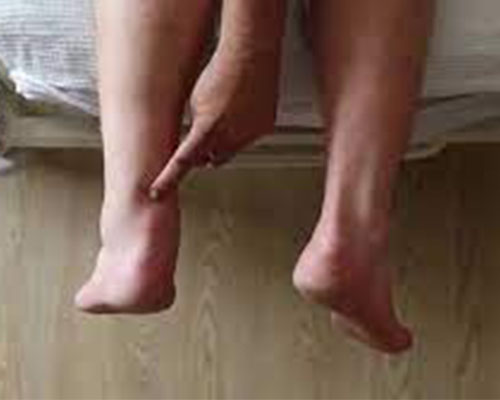Achilles Tendinitis Treatment
The Achilles Tendinitis which is believed to be the strongest in the human body is an essential component that links the Gastrocnemius-soleus complex in the calf to the heel bone or calcaneum. This link is instrumental in several activities inclusive of weight-shifting off the foot, probably walking, running, or jumping. This tendon is very strong, and therefore, requires a very strong force to rupture; however, because it is not very rich in blood supply, it is susceptible to injury. This means that the tendon hardly regenerates itself from minor strains that it practically suffers each day and that makes it to degenerate with time.
Types of Achilles Tendinitis Injuries
Achilles tendon injuries are generally classified into two major categories:
There are also acute traumatic injuries as well as chronic progressive injuries.
1. Acute Traumatic Rupture:
– This injury occurs mostly in the young and active individuals and is as a result of high velocity activities with force in upward direction usually within the course of activities carried out within sports like football, basketball or tennis.
– Other causes of acute ruptures include events that are unrelated to sports; for example, the person may step into a hole or be involved in a road traffic accident (RTA) or have some object which directly impinges upon the tendon with a subsequent contaminated wound and exposure of the severed tendon.
– Disastrously, the patient may experience a snap or tear in the heel area which is then succeeded by great stiffness, pain, and difficulty in weight bearing on the affected leg.
2. Chronic Degenerative Rupture:
– This type of injury mostly affects persons of age 30 years and above, who due to continuous stress on their tendons, over a period of time, see the tendons degenerate gradually.
– It can be broadly caused by non-insertional or insertional tendinosis, situations where fibers in the tendon start to degenerate.
– The rupture generally happens about 6 cm from the superior aspect of this Collection of tendons that forms the Achilles Tendon. Several factors can be used to predispose a patient to such a type of injury which include use of local steroid injections around the tendon or the use of fluoroquinolone antibiotics. Hear mates in the age bracket of 30-40 years especial attention should be taken from sports that result in running, jumping or sport that undergo frequent changes in direction.
Symptoms and Diagnosis
– Acute Injuries:
– Athletes may describe hearing or feeling a ‘pop’ then sudden onset of severe pain and obvious deformity in terms of the tendon gap. Patient unable to stand on their tiptoes, or to push off the foot while walking is a common characteristic. There might be some severe transient development of oedema and ecchymoses and the patient can hardly touch the limb or move the leg at all.
– Chronic Degenerative Injuries:
– These injuries might take time to appear, and a person might end up having a thick and sore tendon. At times the symptoms may be mild and therefore unremarkable until the moment the more severe tear happens. Pain, stiffness, and tenderness along the course of the affected tendon are experienced especially at morning or after an extended period of activities.
Diagnosis:
– In acute injuries the physical examination would immediately suggest some of the grounds for enrollment in the limp, while in cases of chronic wear and tear or in cases when the diagnosis is open ended then imaging studies such as ultrasound or MRI would come in handy. These modes of imaging provide information on the degree of a tendon’s involvement and thus aids in management.
Treatment Options
– Non-Surgical Treatment:
– For mild and moderate injuries the use of RICE procedure; rest, ice, compression and elevation, in conjunction with the physical therapy might help. Orthotic appliances such as heel cups/ wedges or braces could also be used to offload the tendon during the period of rehabilitation.
– Surgical Treatment:
– Surgery is usually recommended for acute complete tears, especially in the middle aged and the active sporting personnel. It usually consists in direct side-to-side suture of the avulsed tendon ends with or without the help of the tendon transfer.
– The Flexor Hallucis Longus (FHL) tendon is commonly used for augmentation, thus strengthening the overall calibre of the repaired tendon. This approach is highly advantageous especially in the circumstance where the tendon is highly damaged or where there is a large discontinuity between the two ends of the torn tendon.
Rehabilitation and Recovery
– Post-Surgery Rehabilitation:
– After ballooned leg surgery, proper exercising routine must be employed that will enhance strength, flexibility and recover the function of the affected leg. This program usually involves physical therapy exercises, stretching and graduated activity and weight bearing exercises. The purpose is to help patient to achieve the optimal level of overall activity subsequently to the injury without the risk of re-injury.
– Long-Term Prognosis:
– Most patients having an Achilles tendon injury are treated and rehabilitated and full function of the tendon can be expected. However, the time taken to recover depends on the extent of the damage, the age as well as the general health of the injured. Tuberculosis can in the long run, take several months or even a year before the athlete is able to regain sports activities.
Covers all the aspects of Achilles Tendinitis injuries but also includes detailed information for patients who are interested in sports injuries, orthopaedic care and Achilles Tendinitis health.


